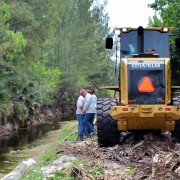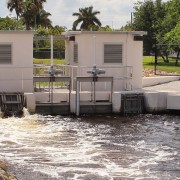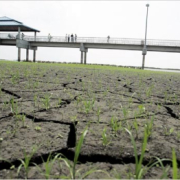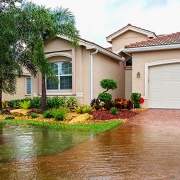Public Safety Projects
Hurricanes, tropical depressions, and tornados are some of the severe weather events the Lake Worth Drainage District (LWDD) must be prepared to deal with at any given moment. Managing over 500 miles of drainage canals and 1,000 miles of associated rights-of-way is a monumental task. It requires experienced staff working daily to maintain the free flow of water in the channel and unencumbered access along the canal banks.
Often mistakenly perceiving the LWDD rights-of-way as part of their backyard, property owners may enhance the rights-of-way with items like trees, fences, sheds or patio decks. These enhancements, or encroachments, can jeopardize public safety during severe weather. Trees and shrubs can fall into the canal, slowing the progression of drainage or cause blockages at major flood control structures. Additionally, structures placed on the right-of-way, like fences or sheds, can obscure sightlines for visual inspections and impede access for maintenance and emergency response.
To combat this problem, LWDD has undertaken a Canal Rehabilitation Program. The rehabilitation process includes the removal of encroachments and, if needed, reconstruction of canal banks. Canal rehabilitation is different than regular maintenance operations. Regular canal maintenance is performed on a scheduled basis and includes mowing, aquatic vegetation management, and encroachment removal. Canal rehabilitation is a more intensive operation and occurs on a more infrequent basis. After rehabilitation takes place, the canals are added to the regular maintenance schedule.
In many instances, areas may not have been addressed for several years due to operational priorities. Following Hurricanes Frances and Jeanne in 2004 and Wilma in 2005, the focus switched to providing unencumbered emergency access along both sides of LWDD canals. The goal of rehabilitation is to return the canal and the right-of-way as close as possible to its original design, thus providing optimal flood control operations.
The health, safety, and welfare of our constituents are paramount, and a well-maintained canal system is the best defense against possible flooding. The District estimates the vegetative removal phase of the project will be completed in 2022.






